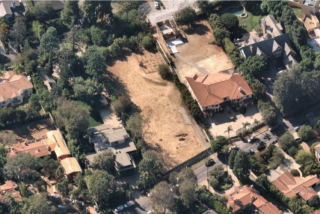DISCOVERIES
The Wild Places
Robert Macfarlane
Penguin Books: 340 pp., $15 paper
âI DID not believe, or did not want to believe, the obituaries for the wild. They seemed premature, even dangerous. Like mourning for someone who was not yet dead, they suggested an unseemly longing for the end, or an acknowledgment of helplessness.â Robert Macfarlane sets out to make a map of the wild places that remain in Britain, threading his way through malls and hedges and suburban landscapes. The map âwould not connect up cities, towns, hotels and airports. Instead, it would link headlands, cliffs, beaches, mountain-tops, tors, forests, river-mouths and waterfalls.â
He begins in northern Wales and makes his way through toothsome landscapes whose very names seem part of a lost fairy kingdom: moors and heaths, woods and glens; the Strathnaver broch, the Burren, a Northumbrian tree ring, Orford Ness, the Isle of Raasay, Bin Chuanna. He invokes his literary ancestors, such as George Orwell, who wrote âNineteen-Eighty-Fourâ on the Scottish island of Jura, and Samuel Taylor Coleridge, who escaped in times of deep depression to the wild landscapes of the Lake District. He sees strange and beautiful things: bioluminescence and snow hares.
In the end, the map seems incomplete, a map of moods like the Inuit sky maps and cloud atlases that helped travelers âinfer the quality of the ice beneath the clouds, as well as future weathers.â He dreams of further travels, imagining âthe wind moving through all these places, and many more like them: places that were separated from one another by roads and housing, fences and shopping-centres, street-lights and cities, but that were joined across space at that time by their wildness in the wind. We are fallen in mostly broken pieces, I thought, but the wild can still return us to ourselves.â
San Miguel Island
My Childhood Memoir 1930-1942
Betsy Lester Roberti
Santa Cruz Island Foundation: 130 pp., $15 paper
SAN MIGUEL is the westernmost and least accessible of the eight Channel Islands that lie off Santa Barbara. It is eight miles long and four miles wide. The Chumash Indians lived there for thousands of years; explorer Juan Rodriguez Cabrillo stopped there in 1542; various sheep and cattle ranchers owned it until 1980, when it became a part of Channel Islands National Park.
In 1930, Herbert Lester and his wife, Elizabeth, became the caretakers of the island and its sheep. There they raised and home-schooled two daughters, Marianne and Betsy, in a ranch house made with lumber from a shipwreck off the islandâs treacherous shores. In 1942, Herbert chopped two fingers off his hand by accident and was prescribed sulfa drugs, which, Betsy Lester Roberti writes, brought on a depression that ended in suicide. Books and articles have been written about the âKing of San Miguelâ and his family, but this is the first childhood memoir. The pictures and text describe a sweet and happy time, a real childhood -- two parts reality, one part dream.
--
More to Read
Sign up for our Book Club newsletter
Get the latest news, events and more from the Los Angeles Times Book Club, and help us get L.A. reading and talking.
You may occasionally receive promotional content from the Los Angeles Times.








